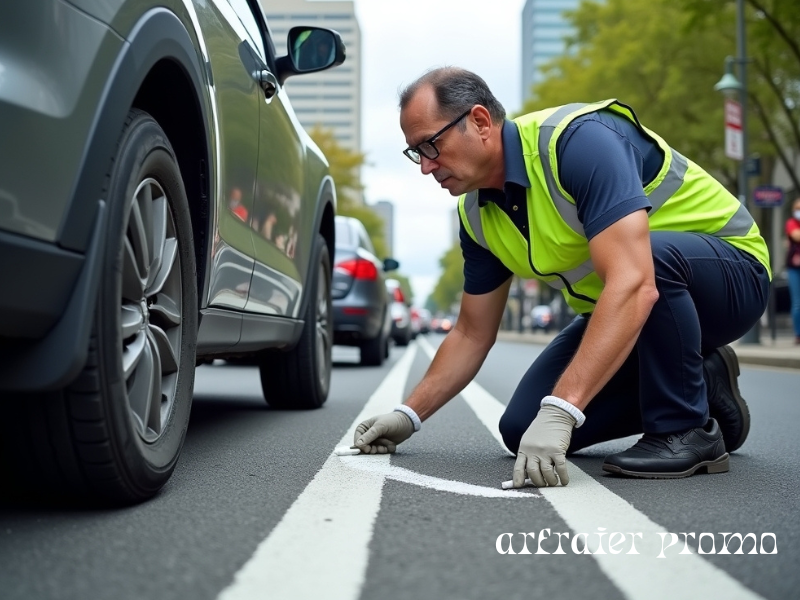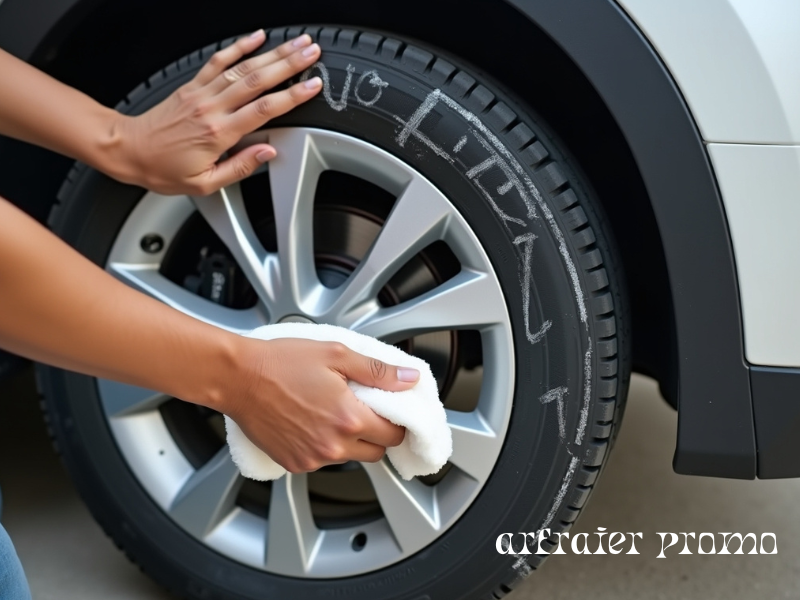If you have ever parked your car in a busy city and later noticed a white or yellow chalk mark on your tire, you might have wondered: what does chalk on tires do? Many drivers assume it’s vandalism or some kind of inspection, but in reality, tire chalking is a method used by parking enforcement officers to track how long vehicles remain in time-limited spots.
In this article, we’ll explain what chalking tires means, how it works, its legality, and what drivers should know when they see these marks.
What Does Chalk on Tires Mean?
Chalking tires is a simple practice where a parking officer uses a piece of chalk to draw a small mark on your car’s tire. The purpose is not to damage your car but to keep track of how long it remains parked in a spot. If your car has not moved within the permitted time, the chalk mark helps prove that you stayed longer than allowed.
Many drivers are often confused by these marks and wonder if it’s something harmful or even vandalism. As discussed on Quora about tire chalking, it’s a common concern among drivers worldwide. In reality, this system is widely used in cities with limited parking to ensure fairness and prevent vehicles from occupying spaces all day.
Tire Chalk Parking
“Tire chalk parking” refers to enforcing parking rules using chalk. For example, if a parking spot has a two-hour limit, an officer may chalk your tire at 10:00 AM. When they return at 12:15 PM, if the mark is still in the same spot, it shows your car hasn’t moved — leading to a possible ticket.
This method remains popular because it’s simple, affordable, and effective, even in 2025. Many small towns and cities without advanced digital systems still rely on chalking.

Why Do Parking Officers Chalk Tires?
Parking officers chalk tires mainly to:
-
Track parking time – Ensure vehicles don’t exceed limits.
-
Promote fair use – Prevent cars from occupying high-demand spots all day.
-
Support local businesses – Encourage parking turnover so more customers can access shops.
For instance, parking in a 2-hour free zone at 9:00 AM could mean an officer chalks your tire. If they return at 11:30 AM and see the mark hasn’t moved, you may face a ticket for overstaying.
Is Tire Chalking Legal?
The legality of chalking varies. In the U.S., some courts ruled it unconstitutional under the Fourth Amendment (unreasonable searches). Yet many states still allow it, seeing it as harmless and practical.
In other countries, tire chalking remains common. However, some modern cities now prefer digital enforcement methods like license plate recognition cameras and mobile parking apps.
(Outbound link idea: Link to a reliable news/legal source explaining the U.S. court ruling about tire chalking)
Does Chalk on Tires Damage Your Car?
No, chalk on tires won’t damage your car. It’s temporary, non-toxic, and easy to wash off. It has no effect on tire performance or safety. Its only purpose is tracking parking time.

Pros and Cons of Tire Chalking
| Pros | Cons |
|---|---|
| Low-cost enforcement method | Some courts consider it unconstitutional |
| Easy for officers to apply | Not always accurate if chalk rubs off |
| Harmless and temporary | Illegal in certain U.S. states |
| Encourages fair parking turnover | Can be replaced by modern systems |
What Should You Do If You See Chalk on Your Tires?
If you notice a chalk mark, don’t panic. It simply means parking enforcement is monitoring your car.
-
If within the time limit: Nothing to worry about.
-
If you overstayed: A ticket may follow, so always move on time.
-
If wrongly fined: Collect evidence and dispute the ticket.
Conclusion
Chalking tires is a long-standing enforcement tool ensuring fair parking in busy areas. While legal challenges exist in some regions, it remains a cost-effective solution in many cities. Most importantly, it does not harm your vehicle.
The best way to avoid issues is to know local parking rules and move your car within the time allowed.
Frequently Asked Questions (FAQs)
1. What is the chalk test on tires?
It’s when an officer marks your tire with chalk to check if the car moves during the parking limit. If not, it proves you overstayed.
2. How does chalking tires work?
The officer notes the time when chalking your tire. If the mark is still in the same spot after the allowed time, you may be fined.
3. Is chalking tires vandalism?
No, it’s not vandalism. Tire chalking is harmless and only used for parking enforcement.
4. How long does chalk stay on tires?
Chalk can stay for hours or even days unless rubbed off, driven away, or washed.
5. Can chalk marks automatically lead to a ticket?
Not right away. A ticket is only issued if the officer confirms your car hasn’t moved after the time expires.
6. Is chalking used everywhere?
Not everywhere. Some cities banned chalking, replacing it with digital tracking tools, while others continue using it.




